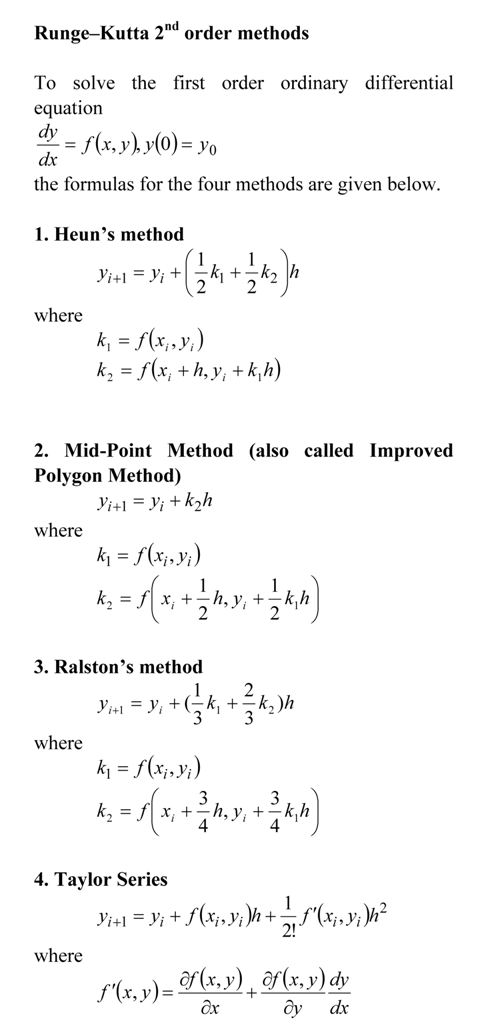Many a times, students ask me
Which of the Runge-Kutta 2nd order methods gives the most accurate answer to solving a first order ODE?
dy/dx=f(x,y), y(0)=y0
There is no direct answer, although Ralston’s method gives a minimum bound for the truncation error (Ralston, A., Runge-Kutta Methods with Minimum Error Bounds, Match. Compu., Vol 16, page 431, 1962).
They also ask me if using the first three terms of the Taylor series would give a more accurate answer if we calculate f^{\prime}(x,y) symbolically.
The equations for the four methods are given below

Here is the comparison graph for
dy/dx=sin(5*x)-0.4*y, y(0)=5
with
step size of h=1.1

and
step size of h=0.55

This post is brought to you by Holistic Numerical Methods: Numerical Methods for the STEM undergraduate at http://nm.mathforcollege.com
Subscribe to the blog via a reader or email to stay updated with this blog. Let the information follow you.